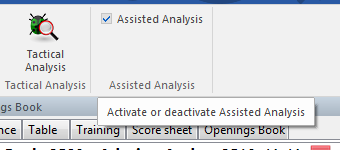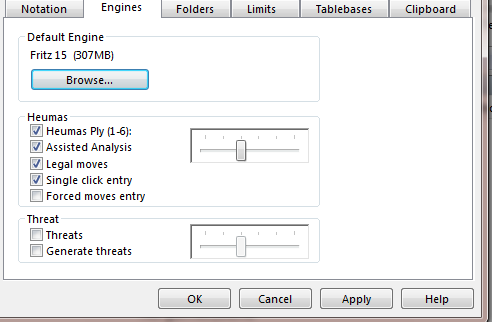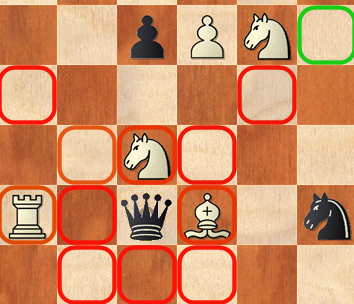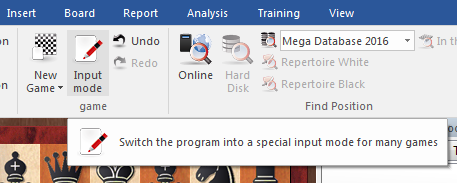|
Assisted analysis |

|

|
|
|
Assisted analysis |

|

|
Assisted analysis
A new function for ChessBase 14 is “Assisted Analysis”, which provides valuable hints to the tactical consequences of a possible move by means of coloured highlights on the board.
Board window – Analysis menu – Assisted Analysis

Tip: Make sure that this function is also activated in the options dialog under Engines! Make sure that this function is also activated in the options dialog under Engines!

This function is available to you when you are entering games or when you are analysing games which have already been saved, for example when adding your own variations. When entering moves, if you click on a piece all the squares it can possibly go to are highlighted with different colours.

The idea behind this analysis function is that in tactically complex situations present day chess engines frequently come up with the best move in mere millisseconds. When you click on a piece, the consequences of a move to all possible target squares are evaluated and each evaluation is highlighted in colour on the board.
The sample diagram shows all possible squares to which the black queen could go. Those marked in green are safe and indicate a good move. Squares highlighted in yellow point to a mediocre, but nevertheless playable move, and the squares highlighted in red a clear mistake. The colour blue represents moves from an opening book and black indicates mating moves. Neutral moves are highlighted in orange.
This function is an extension of the classic way an analysis engine has worked until now when a move in entered. The user inputs the move whilst the chess engine is working in the background and displaying the evaluation of the actual position on the board. It is only then that the user has to decide whether to take back the move or to pursue his analysis.
The decisive difference from the new Assisted Analysis is that the evaluation of the move which has been played was only available after it had been played. The new function therefore makes a more efficient use of the analytical capacities of modern engines and shows the user an evaluation before the move has been played on the board. Thus it quickly becomes apparent whether there is a better move than the one which was originally intended.
This procedure is a less laborious way of discovering alternative continuations. An additional positive effect is that the user is continuously being encouraged to hone his or her calculation skills. Whenever you click on a piece and see that what was presumably a plausible target square is outlined in red, this leads to your searching for the refutation of that move and stimulates you in chess terms whereas the classical engine evaluation tends rather to lead to a passive approach to your chess.
Let us sum up the advantages of the Assisted Analysis function:
| • | You recognise immediately how a move is to be evaluated in terms of quality. |
| • | Whist you are inputting the move, you can focus your whole attention on the chess board without continually looking at what is being displayed in the evaluation window of a running chess engine. |
| • | The function stimulates the calculation of variations and in doing so promotes/trains the user’s chess ability. |
Tip: Assisted Analysis is not compatible with one-click move entry. If the function is active, it is frequently not the most likely move which is made. The reason for that consists in the fact that Assisted Analysis leads to the user clicking on several pieces one after the other to test how good they are. To avoid such conflicts a new input method has been implemented which is conceived exclusively for the rapid recording of games.
Board window -Start menu – Input mode

Alternatively you can set it simply for rapid move input by clicking on the target square.